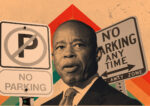The hearings on the City of Yes for Housing Opportunity hinted at what provisions may be added, changed or eliminated to secure City Council approval.
One is affordability requirements. The proposal doesn’t include many, though any rental multifamily construction in the city is likely to use a tax exemption that requires affordable housing.
The Universal Affordability Preference program in the City of Yes also requires affordable housing. A few City Council members and housing groups suggested tweaking its affordability threshold during hearings last week. They also suggested adding affordability requirements to other aspects of the text amendment.
But ensuring more affordable housing without stifling development could be challenging.
UAP would provide a 20 percent density bonus to projects, as long as the extra space is dedicated to permanently affordable housing. The program is intended to replace the city’s Voluntary Inclusionary Housing program. Under UAP, affordable units must be provided to residents earning, on average, 60 percent of the area median income. Under VIH, that threshold was 80 percent of the AMI.
VIH, started in the 1980s, applies to only 13 percent of medium- and high-density districts. The new program would apply in all of those districts, according to City Planning.
During one City Council hearing, the Association for Neighborhood and Housing Development, which represents nonprofit developers, recommended requiring that a percentage of the affordable units go to renters earning at or below 40 percent of the area median income.
The group also would like to see affordability requirements kick in for “town center” and transit-oriented developments with 10 or more housing units.
City Planning estimates that UAP could create more housing in its 15 years than VIH has created since 1987 and that 20,000 units of housing could have been built over the past decade had the program been in place.
Those projections could be deflated if affordability levels are changed, warned Patrick Sullivan, a real estate attorney with Kramer Levin.
“It would be disastrous,” he said in an interview. “It would mean that the UAP bonus would not be used.”
He noted that UAP is already less generous than its predecessor. In addition to the deeper affordability levels, the new program would provide one square foot of bonus per square foot of affordable space. VIH gave a bonus of up to 3.5 square feet for every square foot of affordable.
The VIH program also allowed developers to build affordable housing offsite — which is cheaper — to get the density bonus. In the initial UAP proposal, that option sunsetted after 10 years, to the chagrin of developers. The latest version of the text amendment allows developers to continue to build offsite to meet UAP’s affordability requirements in certain districts.
City officials expect developers to take advantage of UAP alongside the property tax break 485x, which includes similar affordability requirements for certain projects. But if the Council adds deeper affordability to UAP, Sullivan said, projects would require more city subsidy to pencil out.
At one hearing, Brooklyn Council member Shahana Hanif asked about requiring a portion of the affordable units under UAP be made affordable to those earning between 30 and 40 percent of the AMI.
She also asked if the Department of City Planning was considering adding affordability requirements to town center and transit-oriented developments, which would allow two to four stories of housing above businesses in low-density commercial districts and allow three- to five-story apartment buildings near transit.
City Planning Director Dan Garodnick indicated that he was open to discussing the UAP affordability bands, but said he was concerned that adding affordability requirements to town center and projects near transit could “impede the ability for those units to be built.”
Adjusting the affordability bands within a mandated average AMI is not without precedent. Before the City Council approved the Mandatory Inclusionary Housing program, it changed an affordable option so that 10 percent of the affordable units were set aside for households earning 40 percent or less of the AMI.
This seems like the likely path forward for changes to UAP. If the Council lowered the average AMI overall, that could prove out of scope of the text amendment — meaning, it wouldn’t be a simple modification and would need a longer review.
Brooklyn Borough President Antonio Reynoso testified that he supports deeper affordability as part of UAP, but cautioned that the Council needed to balance it against the risk of disincentivizing participation.
He urged the City Council to pass the text amendment in its entirety and, though he lacks a vote on City of Yes, threatened to withdraw his support if a provision to legalize accessory dwelling units, a major point of contention among members, were removed.
“Do not back down, do not scale back, do not shy away,” he said.
Read more


